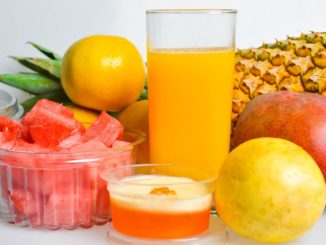
If you’re like 99% of the bodybuilding population out there, your ultimate goal is simple: an impressively muscular physique with razor-sharp definition to match.
You want to be huge, and you want to be shredded as well!
Because of the strong desire for this “ideal body”, most people eagerly dive into their programs headfirst. They don’t want the results to come slowly and gradually; they want to get from point A to point B as quickly as they possibly can and with as little work as is needed. Everyone is motivated to bulk up, but at the same time are afraid of putting on excess body fat.
Let me clear this up right here…
If you want to add a significant amount of muscle to your frame over as short a period of time as you can, you will always end up gaining some extra body fat along with it.
This is simply the nature of the entire process and if you really want to travel a significant way in the “bulking” direction, you have to be willing to accept this.
In order to gain muscle size, you must consume a surplus of calories in order to support protein synthesis. However, there is no way to divert 100% of this caloric surplus towards muscle growth. A certain amount of it will always end up as stored body fat.
If you want to make dramatic changes to your appearance over the shortest period of time, it is always best to focus on gaining size for a set period of time, followed by focusing on losing body fat for a set period of time.
Since your levels of muscle mass play such a large role in determining your basal metabolic rate, it will always be far easier to melt off body fat once you’ve built up your muscle size to a significant degree. This is why beginning with a bulking phase is almost always the most efficient route.
Based on what we’ve covered so far, the goal of a bulking phase is simple: build as much muscle size as possible while minimizing body fat gains. Your goal during a bulking phase is never to LOSE body fat; it’s only to gain as little as possible.
This Can Be Accomplished In 3 Main Ways:
1) Use a precise caloric surplus
There exists such a thing as “optimal nutrition”, but there is no such thing as “super nutrition”. A caloric surplus is required to fuel muscle growth, but haphazardly cramming more food down your throat beyond what is necessary to build muscle tissue will simply cause you to gain more fat.
The generally accepted caloric surplus for supporting muscle growth is 15-20% more calories than is needed to maintain your weight. If you are consuming a caloric amount within this range, there is no need to go any higher.
2) Pay attention to your food choices
The vast majority of your food intake should be coming from lean, high quality proteins, natural/high fiber carbohydrates and healthy/unsaturated fats.
Rather than aimlessly chowing down on every food item in sight, make sure that you’re sticking to lean protein sources, keeping blood sugar levels stable through proper carbohydrate choices, and avoiding high amounts of saturated fats.
3) Implement cardio sessions
There’s no need to go overboard here, but implementing 2-3 cardio sessions throughout the week is another way to cut down on fat gains during a bulking cycle. Stick to high intensity/low duration forms in the range of 10-20 minutes, as these types of sessions do not cause the same degree of muscle loss as longer duration forms do.
Once you’ve gained an amount of muscle size that you’re happy with (and this is totally up to the individual), you can then shift into a fat loss cycle and focus on stripping off body fat while maintaining muscle size.
However, just keep in mind that while bulking up, gaining some body fat is inevitable and the trick is simply to minimize it rather than totally avoid it.
To learn exactly how to structure a proper weight training and nutritional plan that will maximize your muscle gains while keeping your body fat levels under control.




Be the first to comment